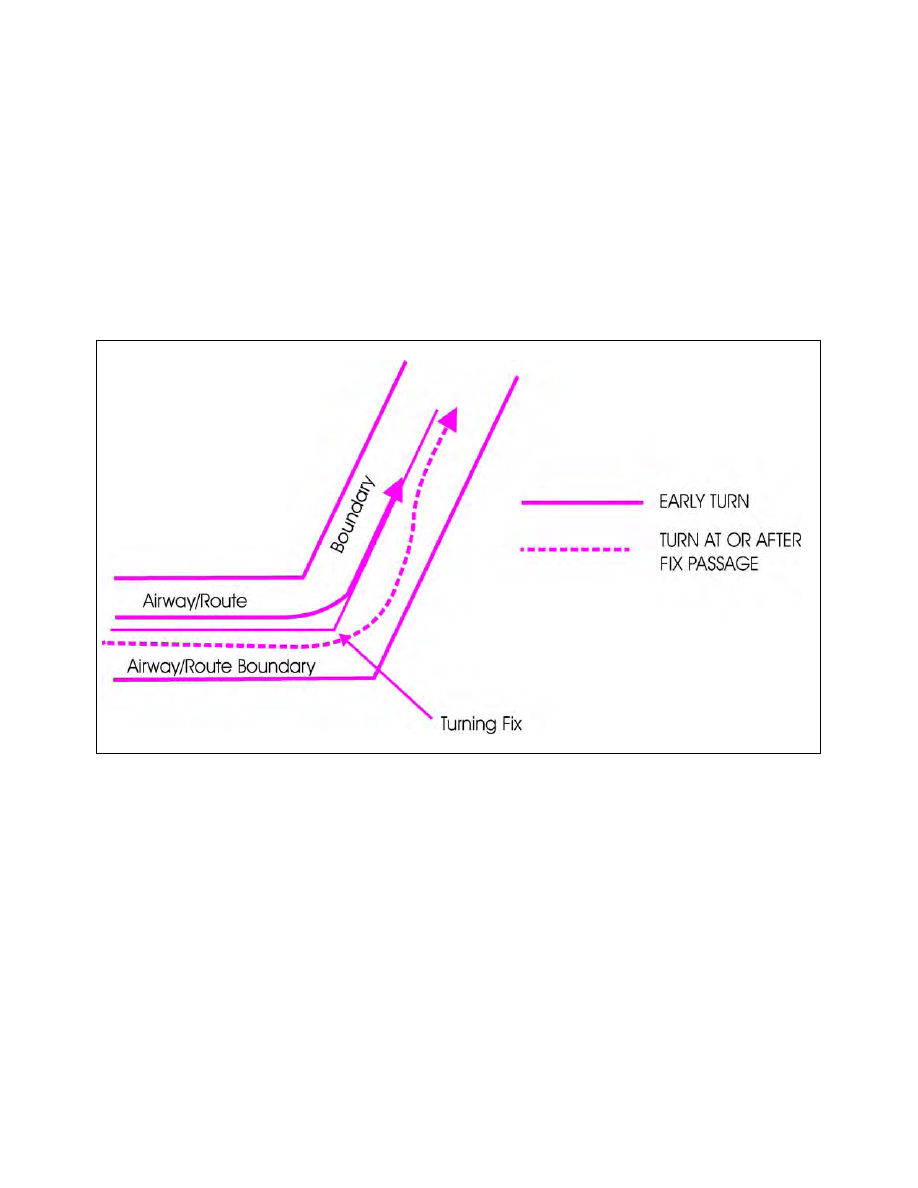
AIM
4/3/14
5−3−7
En Route Procedures
level airspace means an airspace designated and
defined as such in the Designated Airspace
Handbook.)
(b)
Unless issued a VFR flight clearance by
ATC, regardless of the weather conditions or the
height of the terrain, no person may operate an
aircraft under VMC within Class B airspace.
(c)
The requirement for entry into Class B
airspace is a student pilot permit (under the guidance
or control of a flight instructor).
(d)
VFR flight requires visual contact with
the ground or water at all times.
2.
Segments of VOR airways and high level
routes in Canada are based on L/MF navigation aids
and are charted in brown color instead of blue on
en route charts.
FIG 5
−3−1
Adhering to Airways or Routes
5
−
3
−
5. Airway or Route Course Changes
a.
Pilots of aircraft are required to adhere to
airways or routes being flown. Special attention must
be given to this requirement during course changes.
Each course change consists of variables that make
the technique applicable in each case a matter only the
pilot can resolve. Some variables which must be
considered are turn radius, wind effect, airspeed,
degree of turn, and cockpit instrumentation. An early
turn, as illustrated below, is one method of adhering
to airways or routes. The use of any available cockpit
instrumentation, such as Distance Measuring Equip-
ment, may be used by the pilot to lead the turn when
making course changes. This is consistent with the
intent of 14 CFR Section 91.181, which requires
pilots to operate along the centerline of an airway and
along the direct course between navigational aids or
fixes.
b.
Turns which begin at or after fix passage may
exceed airway or route boundaries. FIG 5−3−1
contains an example flight track depicting this,
together with an example of an early turn.